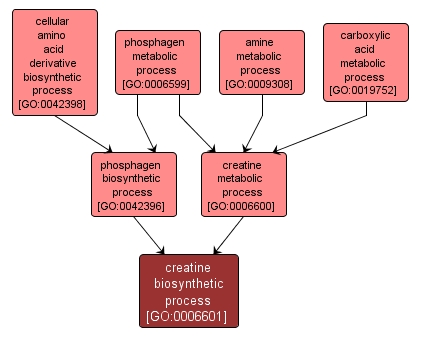| Desc: |
The chemical reactions and pathways resulting in the formation of creatine, N-[amino(imino)methyl]-N-methylglycine. Creatine is formed by a process beginning with amidino group transfer from L-arginine to glycine to form guanidinoacetate, followed by methyl group transfer from S-adenosyl-L-methionine to guanidinoacetate; it is then is phosphorylated to form a pool that stores high energy phosphate for the replenishment of ATP during periods of high, or fluctuating energy demand. In animals, most creatine is transported to and used in muscle. |














